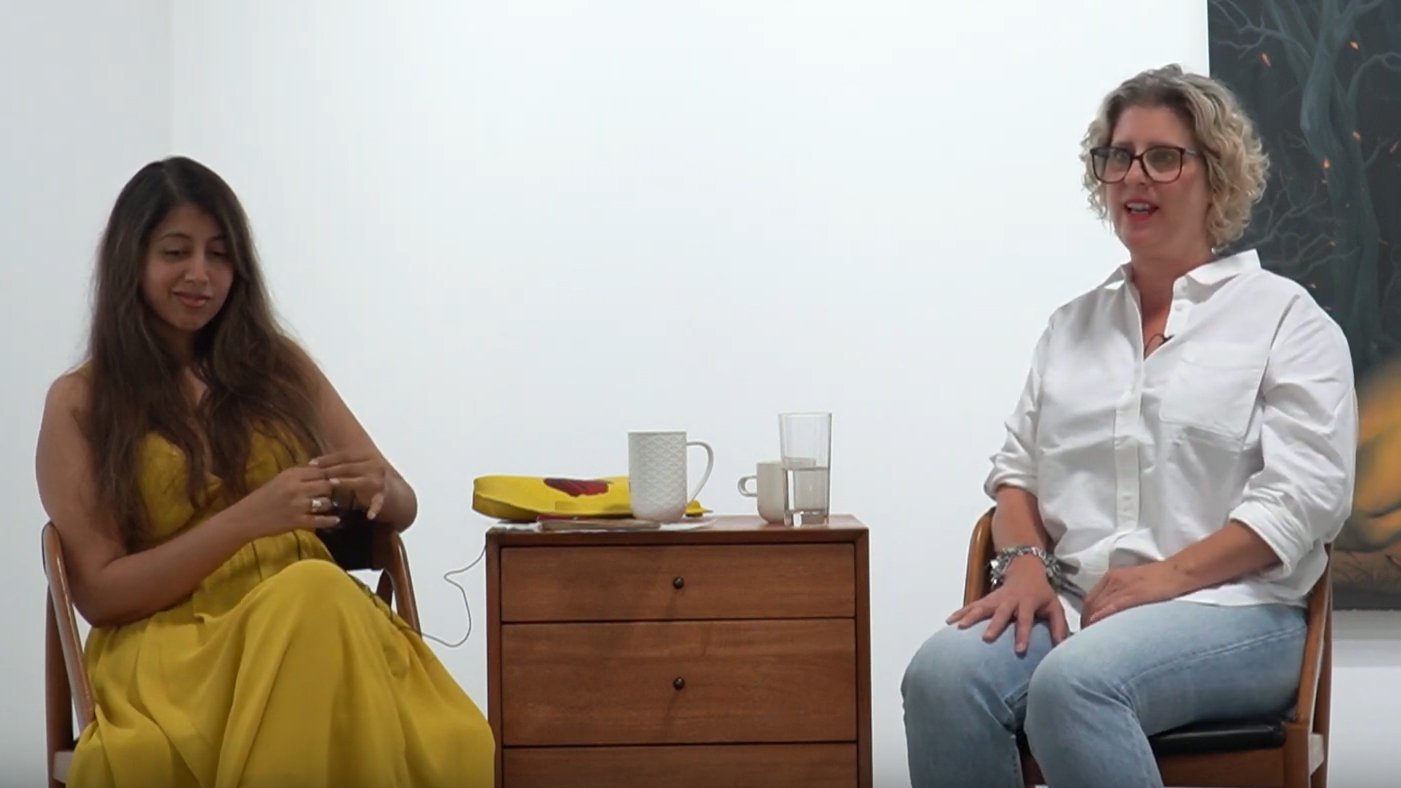In Conversation: Rose Marcus
INTERVIEW
BY ANNA KOVLER
Published Aug 28, 2019
Rose Marcus is known for photographic works that blur the boundary between photograph, abstract painting and sculptural object. Printed on vinyl and adhered to display and construction substrates, her photographs are then incised, layered, punctured with large cut out shapes or partially veiled in fabric. Despite capturing iconic New York landmarks, these photos are mundane, impersonal. There are cars stopped at a red light near Central Park, cyclists and pedicabs, snippets of taxicabs and reflections on the windows of The Seagram Building.
Shot without a viewfinder, her unceremonious pictures lack the usual photographic conventions of composition or a coherent subject. They read like literal pieces of the city, scooped out of context then themselves cut up, adorned with silk and velvet, rearranged. Her work has been described as “heavily tortured communication” and indeed we are left to solve a difficult puzzle in each case. What does the photograph mean? What do the shapes and fabric mean? And what does it mean all together? Answers are not easy to find and we are left meditating on various questions like the fate of modernist architecture, the value of progress, and the various layers, both material and ideological that obscure or allow vision.
I spoke with Rose to find out about her process of shooting and why she once said that it’s better to make art from a place of “not knowing.”
Anna Kovler: I find it very difficult to grasp your work from photographs of it. Is this something you are doing on purpose?
Rose Marcus: It’s funny you say this, because even my colleagues who know my work really well say they never could have understood what’s going on in a particular piece in person especially when they had looked at a photo of it. I want them to be hard to see in virtual spaces and have a rigorous relationship to light in real life. A lot of artists are being pressured to make work that looks good on Instagram, and I’m not against that, but my hope is that things look intriguing or uncertain enough to impel you to see it in person. There is a deliberate logic to make my works under-perform in photo documentation. I often use velvet and you can’t document velvet in photos at all, the camera just doesn't get it.
AK: Why is using a point and shoot camera with no viewfinder important to you?
RM: I think it makes taking pictures a more physical experience. All I have is the digital screen and it's a completely inaccurate experience, almost like using a pinhole camera. I end up using my peripheral vision a lot, and using the bounty of the digital image that I can draw from after the fact to find the needle in the haystack. I tend to photograph things that anyone would have seen if they were standing in the same spot I was.
AK: I feel that your work forces the viewer to consider the difference between the “real” objects you add to the photographs, like fabric or plastic, and the “virtual” world captured by the photograph. The fabric has a here-now quality to it while the photos make us aware that this moment has passed. Does this ring true for you?
RM: That's very well put, and I think that an ongoing thesis in my practice is to contrast that here-now with the that-then. I mount photographs onto material that I can cut into to reiterate that all images are material, and anything can happen to that substrate. I want to widen the frame of what we deem is a photograph.
AK: How do you choose which New York landmarks to shoot?
RM: They sort of choose me. For example, since studying architecture I’ve been interested in monuments because they are in-between architecture and sculpture. There is something about them that seems false to me, like simple celebrations of historical moments. But then how the monuments unfold over time can be really strange and uncanny, like the Imagine Circle in Central Park which I did a series with. It’s supposed to be an homage to John Lennon, this floor mandala framing the word “imagine” that Yoko Ono designed, across the street from where he was shot. It’s now become a symbol of an alternative economy where buskers perform songs and even compete over time slots. The whole thing is so well trafficked that it’s purportedly sinking. European tourists take selfies there. I like monuments because they are sculptures explicitly trying to have meaning in public space and as such they operate more like livings things, conceptually kinetic, whose meaning can shift.
AK: You often print your photographs on vinyl and collage other unorthodox photography materials into your pictures like silk, shower liners, plywood, rubber, and chiffon. Can you talk about what motivates your choice of materials?
RM: The fabric is interesting in terms of the here-now we were talking about, and also because the fabric itself is really subject to change with light and air movement, especially chiffon because it rustles. Both chiffon and velvet speak to commercial photography. Velvet is used in advertising and traditional large format photography to give space to the image, and chiffon is not dissimilar to using a gel on a camera lens. It is also a way for me to allude to a figuration even if an image has no figure. These fabrics have corporeal, feminine, heavy-handed meanings. They also offer a way for me to work with a material that operates by chance and trial and error, like layering paint in a painting.





